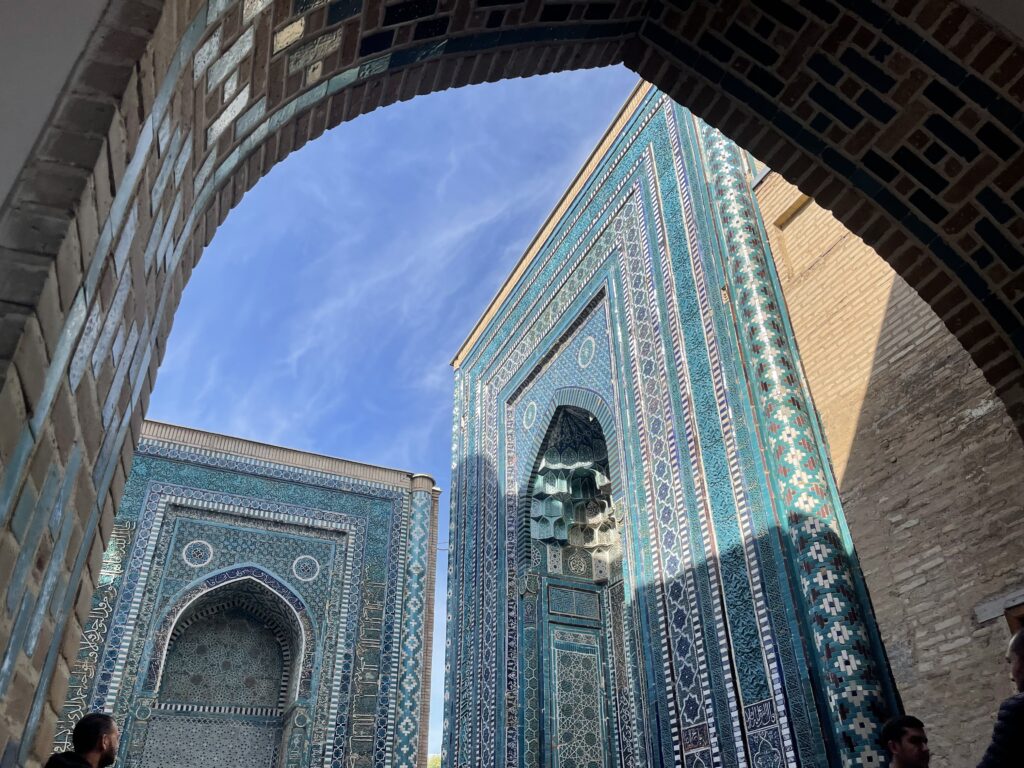Samarkand, often referred to as the ‘pearl of the East,’ served as the capital of the vast Timurid Empire, extending from modern-day eastern Turkey to northern India. Having conquered such a large swath of land, it comes as no surprise that the city still boasts a remarkable collection of some of the world’s most splendid architectural monuments.
After being ransacked by Genghis Khan in 1220, much of the city was destroyed. As a result, most of the remaining landmarks date from the 14th century onwards.
With its rich history as a vital stop on the Silk Road, this majestic city earned UNESCO World Heritage status in 2001 under the title ‘Crossroad of Cultures’.
No visit to Uzbekistan is complete without experiencing the things to do in Samarkand, from exploring historic sites to sampling local cuisine.
Main Tourist Attractions in Samarkand: The Big Four
If you’re short on time but eager to see the main tourist sites in Samarkand, these iconic landmarks are the city’s most famous.
The Registan
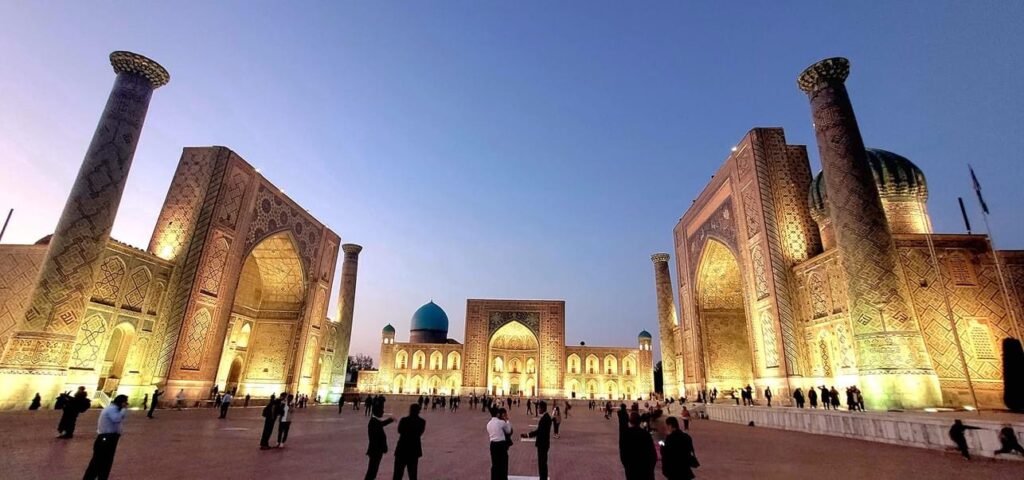
The Registan Ensemble is the jewel in Samarkand’s crown and probably the most recognized landmark in all of Central Asia. A public square upon which three marvelous madrasahs stand, the tilework alone is enough to mesmerize all those who pass.
The trio consists of the Ulugbek Madrasah (completed in 1420), the Sher Dor Madrasah (1636), and the Tilya Kori Madrasah (1660). Each madrasah can be entered to discover courtyards, exhibitions, and even a golden mosque.
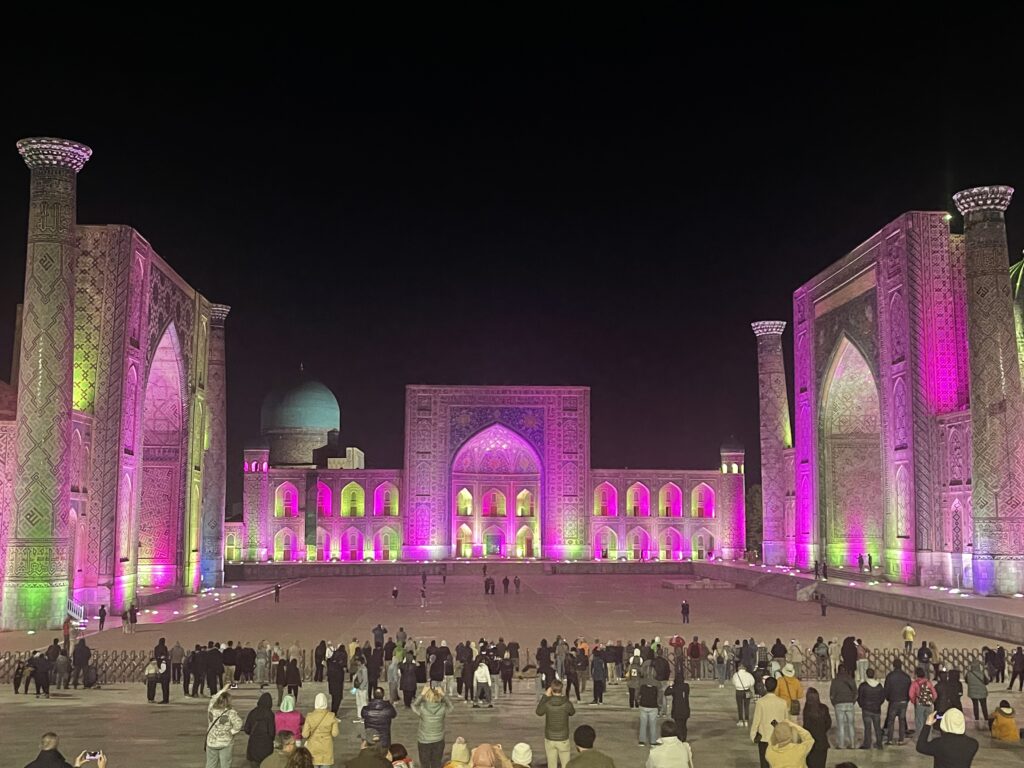
Come back at 9pm every night to watch the daily light show during tourist season.
Gur-e-Amir Mausoleum (Amir Temur Mausoleum)
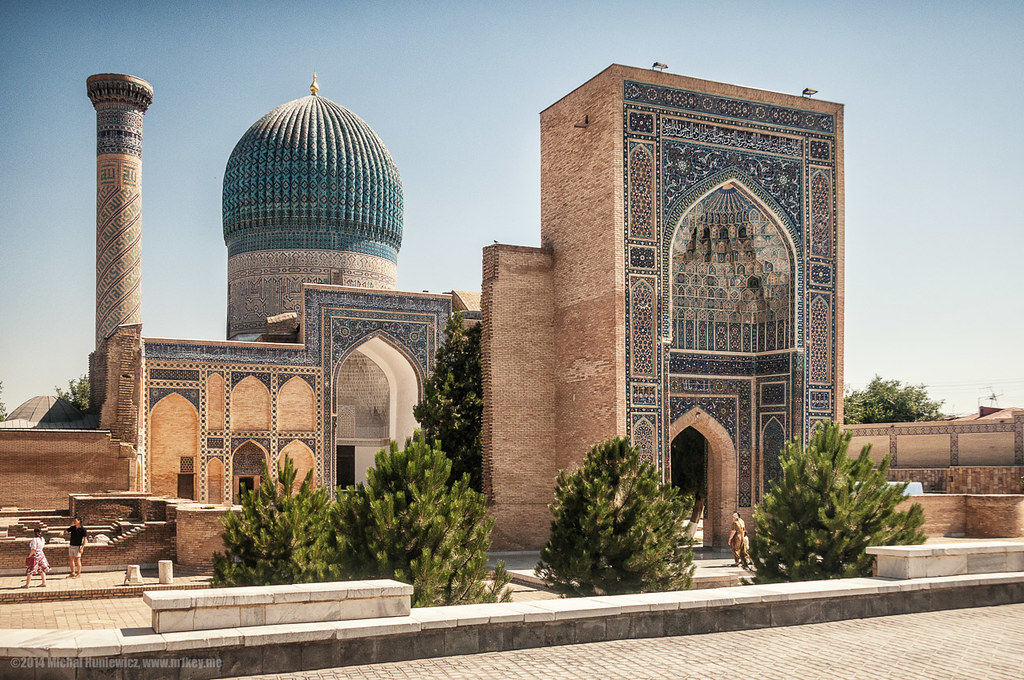
The final resting place of the conqueror Amir Temur was never originally intended for this purpose. Built in 1404 to inter his deceased beloved grandson, Temur died from fever whilst on a planned conquest of China. He had built a tomb for himself in his homeland of Shahrisabz, but due to heavy snow, it was not possible to transfer his body there. As a result, he was buried in this unintended tomb instead.
His actual burial place is in a crypt under the mausoleum, where his tomb is marked by a slab of jade, which was said to be the largest in the world at the time. In addition to Temur, two of his sons, his grandson, and subsequent ruler Ulugbek were also buried here.
Bibi-Khanym Mosque
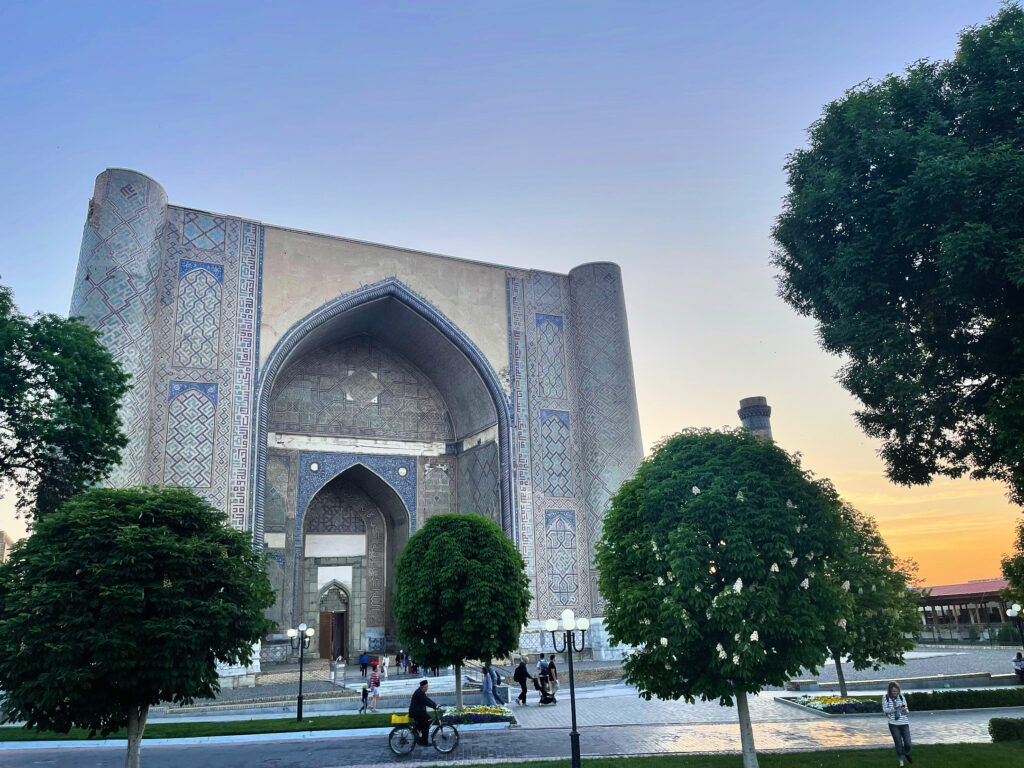
Said to be the largest mosque of its time, the Bibi-Khanym Mosque is shrouded in legend. There are several stories regarding its origin, but the prevailing one is that it was commissioned in 1399 by Bibi-Khanym, Temur’s senior wife and a descendant of Genghis Khan, also known as Saray Mulk Khanum.
Legend has it that the architect overseeing construction fell in love with her, demanding a kiss. The kiss left a mark on her face, leading Temur, according to the tale, to have the architect killed.
Having been built hastily, the mosque was poorly constructed and deteriorated over time. In 1897, it was partially destroyed by an earthquake before being restored by the Soviets in the 1970s.
The grand marble Quran stand in the center of the courtyard was believed to bestow fertility upon women who crawled under it. Unfortunately, it’s now protected in glass casing—only time will tell if Samarkand’s birth rate is affected.
Shah-i-Zinda Necropolis
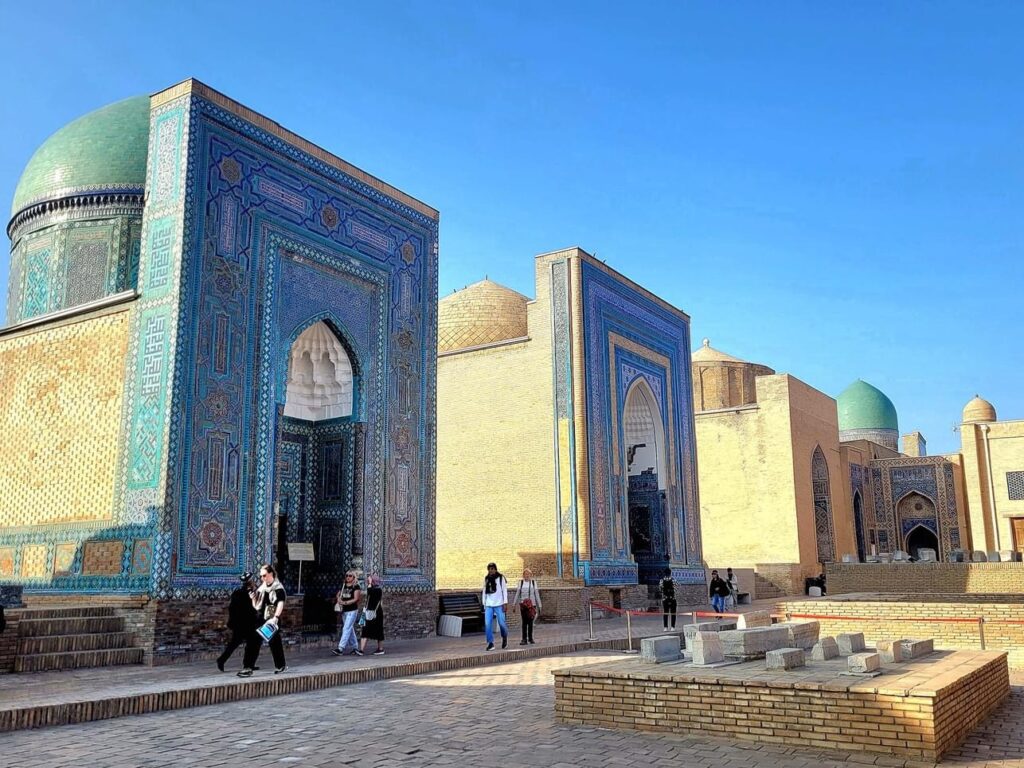
If the Registan is Samarkand’s most famous monument, then the Shah-i-Zinda Necropolis is its most popular Instagrammable spot. This narrow corridor of stunning blue-tiled mausoleums has over 1,000 years of history, slowly building up since the 11th century.
Meaning ‘living king’, Shah-i-Zinda is named after Qutham ibn Abbas, a cousin of the Prophet Muhammad, who, according to legend, came to Samarkand to preach Islam in the 7th century. It is said that he was beheaded during prayer but miraculously jumped into a well where he is believed to live eternally.
Other mausoleums here are dedicated to family members and associates of Temur and Ulugbek.
Other Must Visit Landmarks in Samarkand
Observatory of Ulugbek
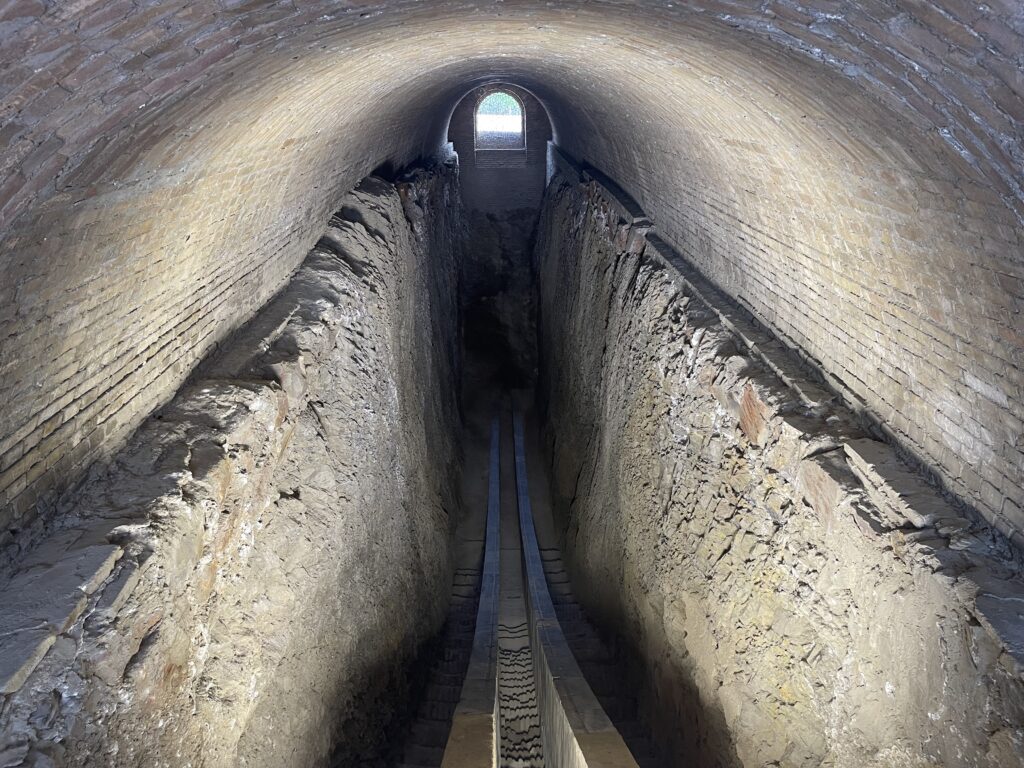
Grandson of Amir Temur, Ulugbek became ruler of Samarkand in 1409. Renowned more as a scientist than a ruler, some of Ulugbek’s astronomical calculations were remarkably accurate and remained unmatched until the advent of computers.
He rose to become head of the Timurid dynasty in 1447, but unpopular with religious zealots, he was executed only two years later. His observatory was destroyed, but due to being hidden underground, it survived and was excavated in 1908.
Ak Saray Mausoleum
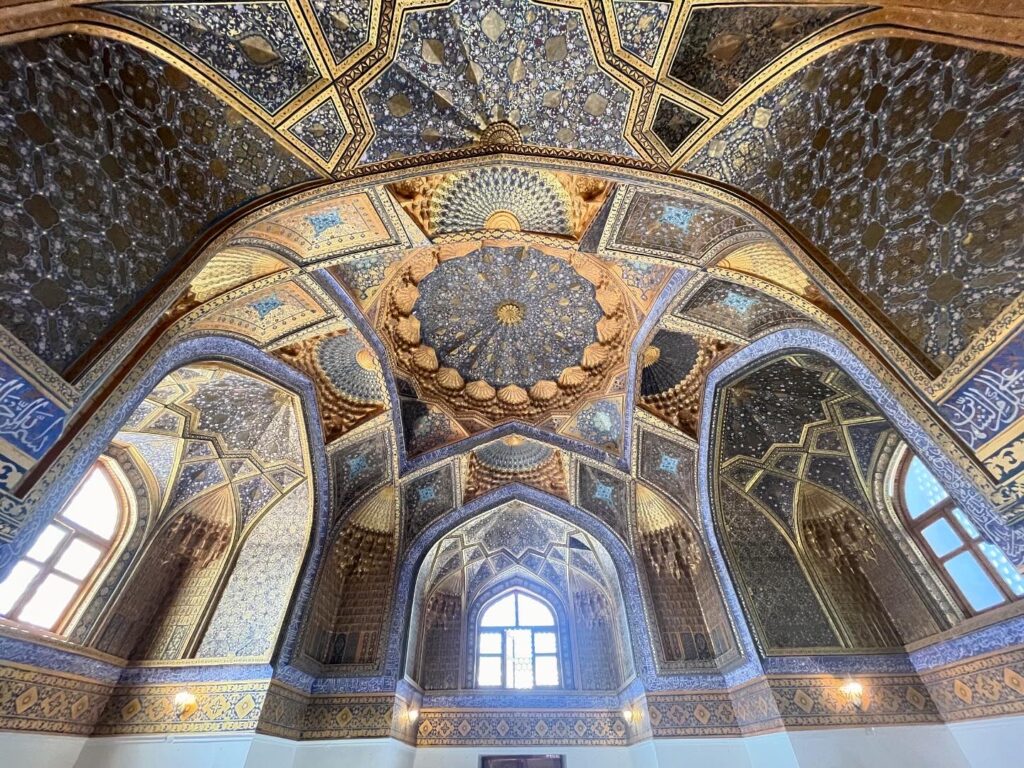
Built in the 1470s as the Timurid empire was coming to an end, this modest-looking building, not to be confused with the Ak Saray Palace in Shahrisabz, was never completed, perhaps due to a lack of funding. Among those interred here are several members of the Timurid family, including Abdal-Latif Mirza, the son of Ulugbek, who infamously murdered his own father.
The mausoleum’s interior underwent restoration in 2007, yielding one of Uzbekistan’s most stunning ceilings adorned in blue and gold. Surprisingly, few tourists are aware of this mausoleum, despite its location just behind the walls of the Gur-e-Amir mausoleum. Visitors can also explore the crypts in the dome-shaped basement.
Siab Bazaar
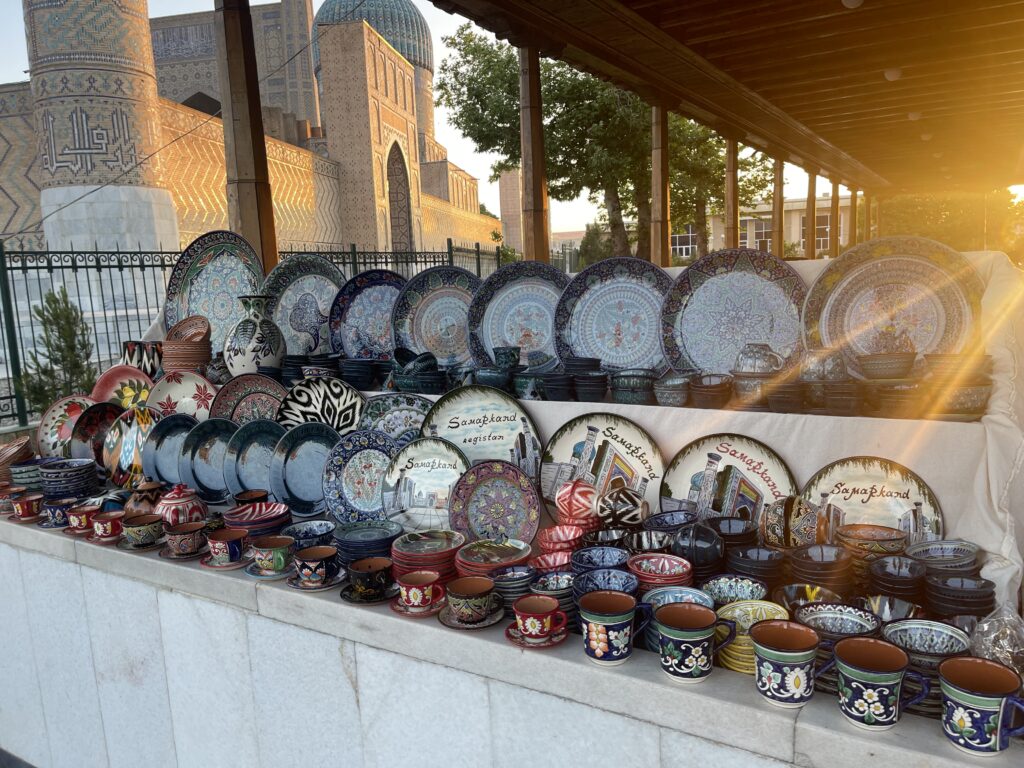
Located right next to the Bibi-Khanym Mosque, Siab Bazaar is a lively farmers market selling everything from Uzbek sweets, dried fruit and nuts to ceramics and dresses. It’s a great place to go buy souvenirs or just go browsing (don’t forget to haggle!). Try some freshly squeezed pomegranate juice as you explore.
As far as bazaars go, it’s about as touristy as they come but it’s still well worth a visit. It’s open every day apart from Monday.
Khoja Daniyor Mausoleum (Tomb of St. Daniel)
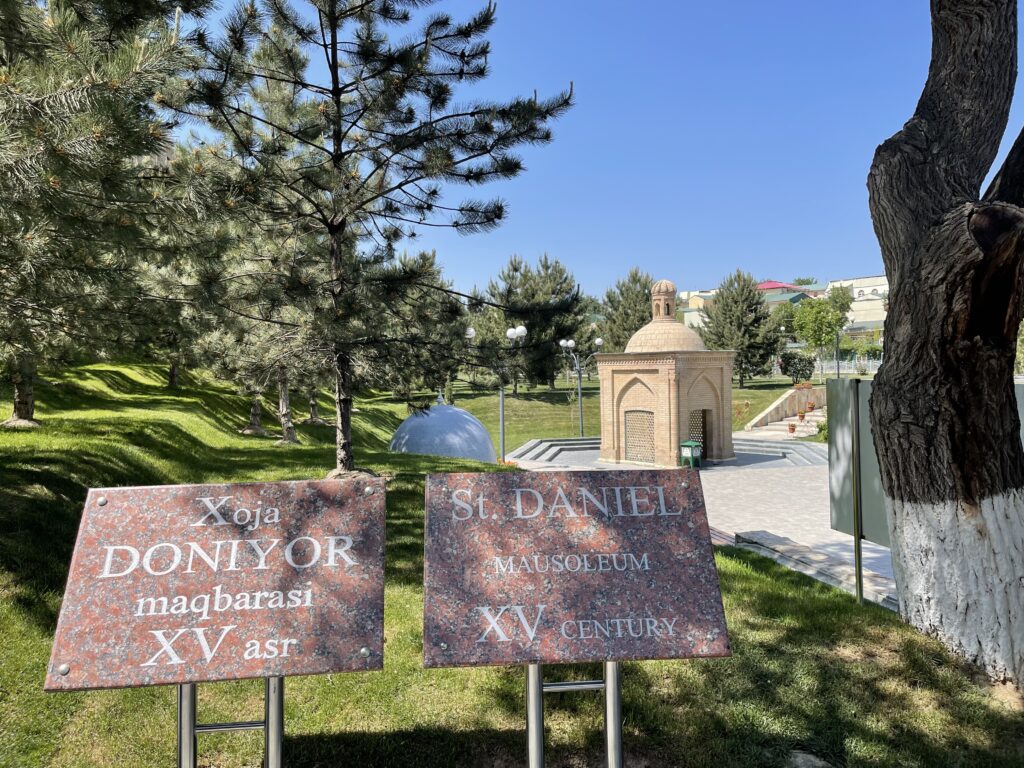
St. Daniel, locally known as Khoja Daniyar, is revered by all three Abrahamic religions, and this mausoleum dedicated to him serves as a pilgrimage site for Muslims, Christians, and Jews.
According to legend, he was buried in Susa, Iran, but Amir Temur brought his remains to Samarkand for interment here instead. It’s said that even in death, his body continues to grow, and his sarcophagus, which measures 18 meters long and is draped in green and golden velvet cloth, expands to accommodate his body.
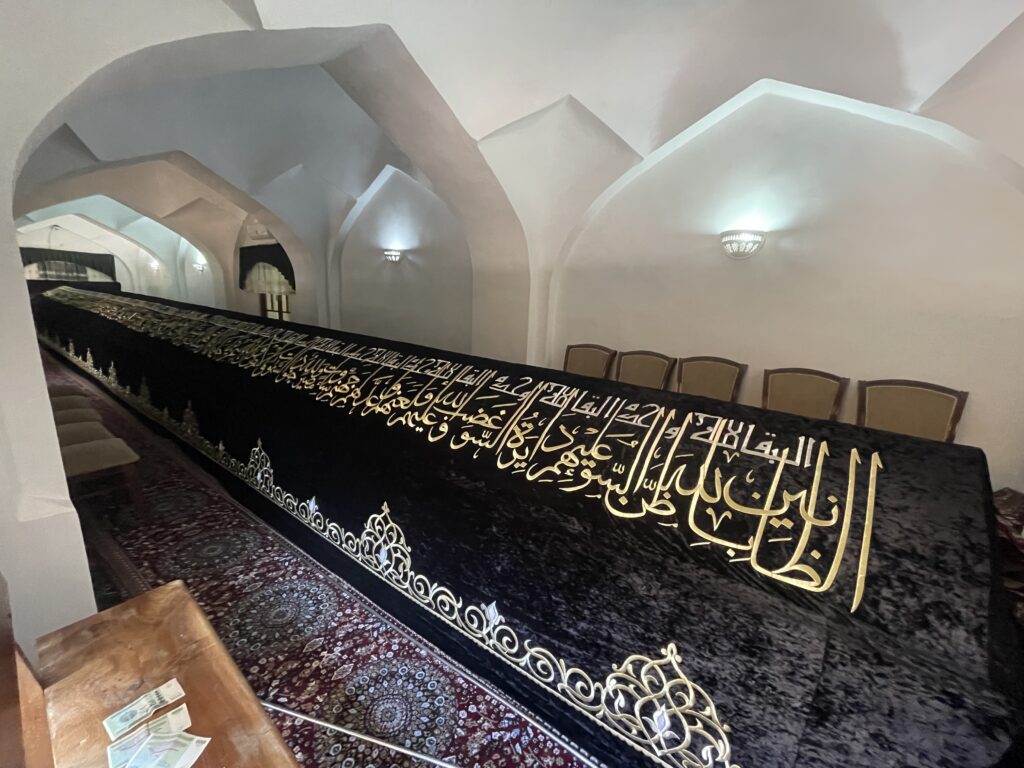
Hazrat Khizr Mosque
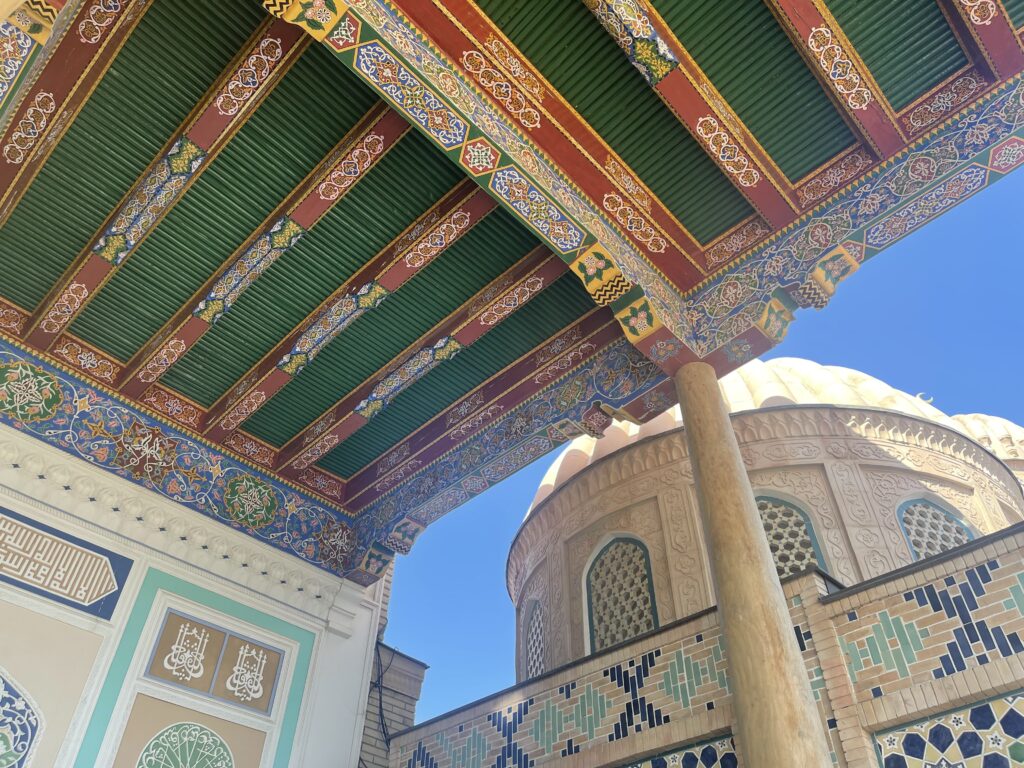
This colorful mosque, located just under the ancient Afrasiab settlement, was built in the 19th century on the site of a mosque originally from the 8th century. The original mosque was destroyed by Genghis Khan as he ransacked Samarkand in 1220.
Next to the mosque is the tomb of Islam Karimov, Uzbekistan’s first president and notorious dictator. Photography is not allowed inside of the tomb but the view of Samarkand from the raised façade of the mosque is particularly pretty.
Ancient Afrasiab Settlement and Museum
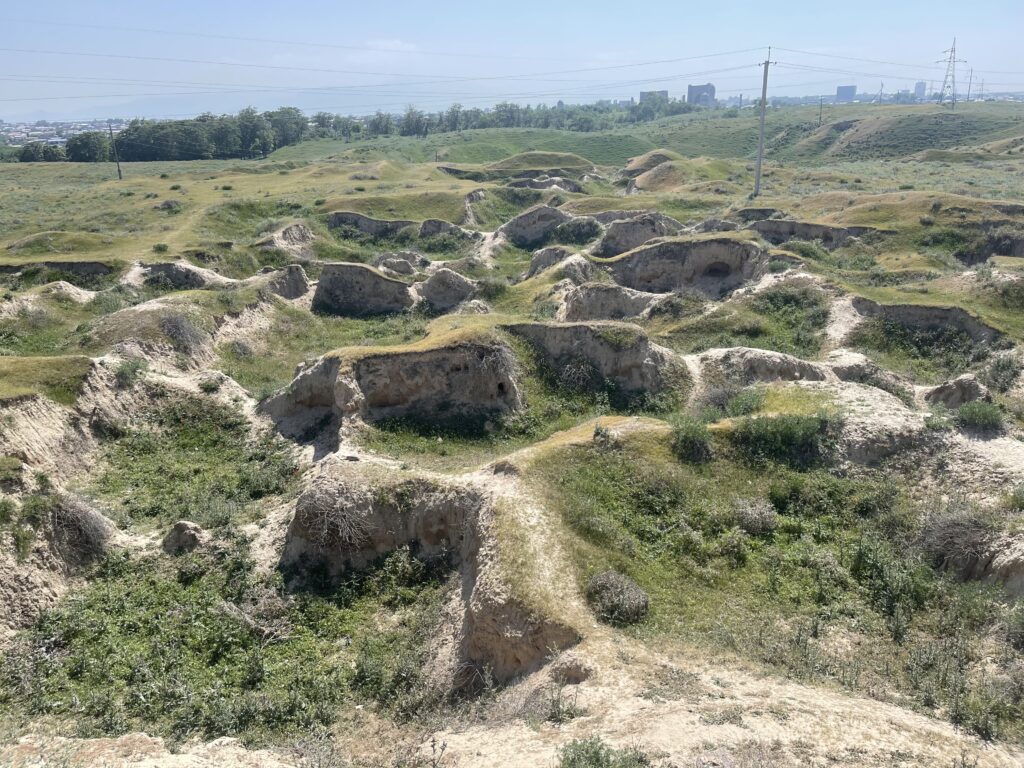
The origins of Samarkand as a city begin with the ancient settlement of Afrasiab, said to date back to the 8th century BC. This archeological site covers a huge area and certainly requires some imagination-for context, visit the Afrasiab museum first.
The museum contains artifacts recovered from excavations of the site such as ceramics, weapons, coins, and human remains. Its main attractions however are the 7th century murals depicting the civilizations of China, India, and the Turkic Khaganate.
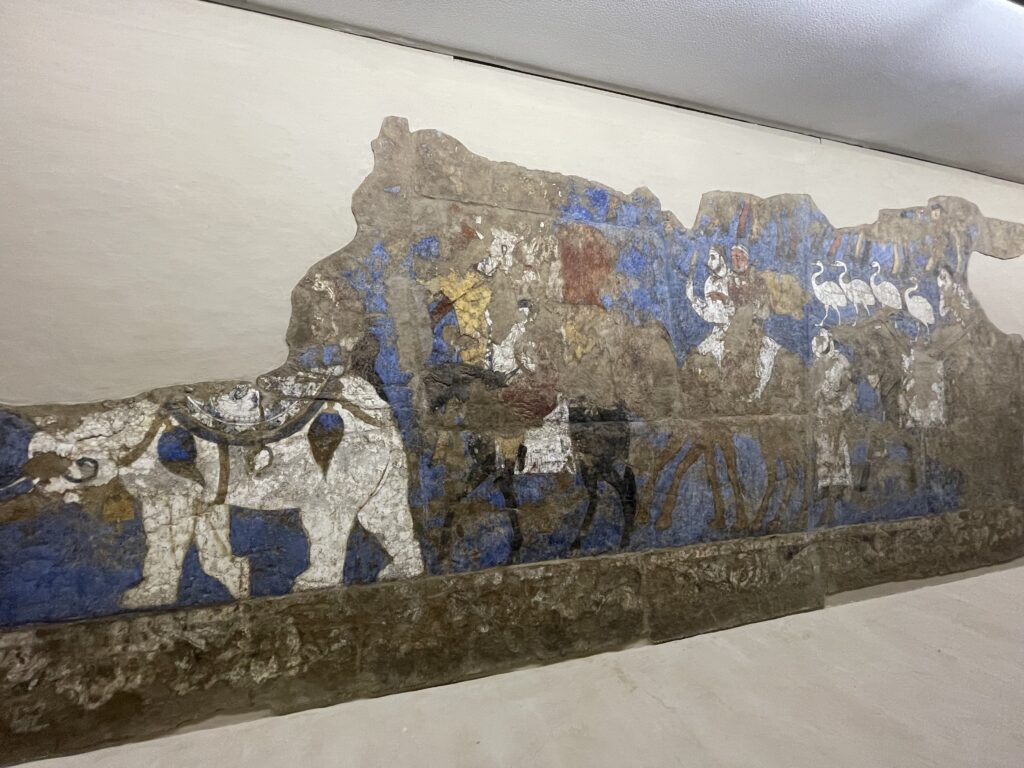
Things to Do in Samarkand
Eat Samarkand Plov
Each region of Uzbekistan has its own version of plov and Samarkand is no different. The ingredients are cooked separately and served in layers rather than being cooked all at once.
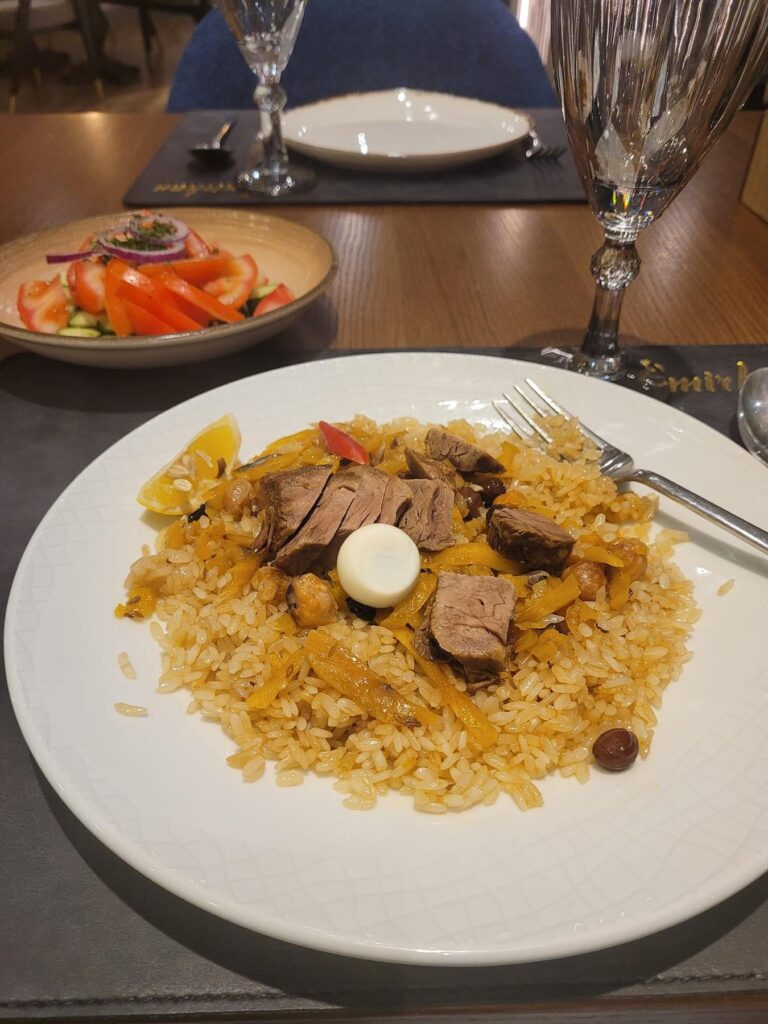
Sample Local Wine

Better known for its history than its vino, Uzbekistan is actually a producer of wine too. This wine tasting session serves as a fun introduction to the local and international wines that can be found in Samarkand.
Led by a sommelier, you’ll explore 10 different types of wine and cognac while enjoying light snacks, leaving you feeling pleasantly lightheaded. Read more about Samarkand wine tasting here.
Shop for Ikat Silk Dresses
Ikat, known as abr in Uzbek, is a vibrant fabric with intricate patterns. Ikat silk dresses come in all shapes and forms and are incredibly lightweight, making them perfect for the warm weather. You can find them in Siab bazaar or on the main tourist street on your way to the Bibi Khanym mosque.
You’ll also find silk scarves and velvet bags at very reasonable prices. It would be quite rude to visit the Silk Road without buying some silk, after all.
Related Articles:
